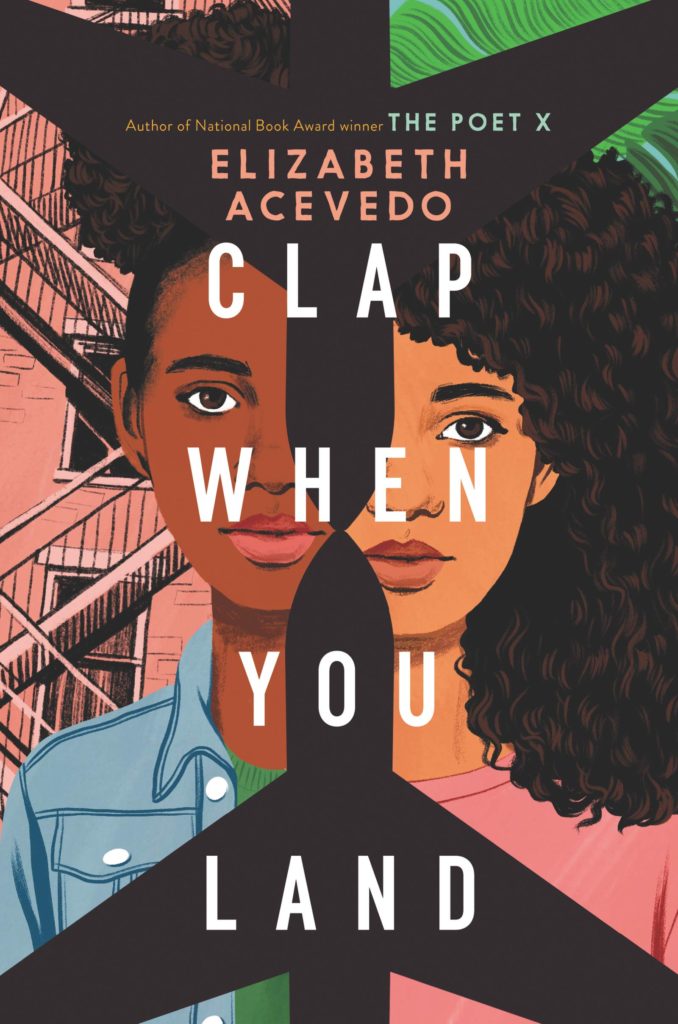Two months after the 9/11 attacks in New York City, an American Airlines flight bound for the Dominican Republic crashed shortly after takeoff from JFK Airport. Many feared another terrorist attack, and the determination of mechanical failure as the cause did little to assuage the trauma in the neighborhood where the plane crashed, in the Dominican Republic, and in the immigrant community of Washington Heights where Elizabeth Acevedo lived. This event became the inspiration for her third YA novel.

Like her acclaimed debut The Poet X, Clap When You Land is a verse novel. It’s told in the alternating points of view of Camino Rios in Sosúa, Dominican Republic, and Yahaira Rios in Washington Heights. Camino and Yahaira are half-sisters, but at the beginning of the novel, they don’t know it. All they know is their father died in a plane crash en route from New York to Santo Domingo. Camino receives money from her father that allows her to attend private school and harbor dreams of studying in the U.S. to become a doctor; her father’s money also pays off a local gang leader to keep her safe. Yahaira and her father share a love of chess and the bonds of family and friends…until she discovers a marriage license that belongs to him and another woman. The discovery drives a wedge between them, so that when he dies, Yahaira doesn’t get the chance to hear his side or to say goodbye. For Camino, her father’s death has more practical consequences – the loss of her dream and the fear of violence and sexual exploitation without his protection. When Yahaira tracks down Camino on social media and then travels to the Dominican Republic with her father’s remains, she and Camino discover what they have in common and what they must do to salvage the best of their father’s legacy while accepting his flaws.
Acevedo’s novel is a moving account of disillusionment, grief, and reconciliation. Camino and Yahaira narrate in distinct voices – Camino in three-line stanzas that capture the slower cadence of life in Sosúa, and Yahaira in staccato two-line stanzas that depict her life in New York City. The novel shines brightest when the two sisters come together, their voices sometimes crashing against each other, sometimes intertwined, as they navigate their suddenly ripped-apart and reconstituted family. Secondary characters – Camino’s curandera aunt, Yahaira’s frazzled mother who finds her take-charge attitude, and Yahaira’s girlfriend and her family – add texture to the relationships and the story. Thoughtful details of book design contribute to the reader’s understanding of Camino and Yahaira’s different worlds.